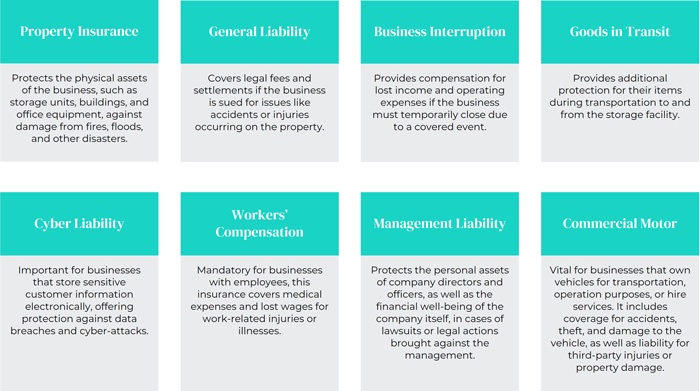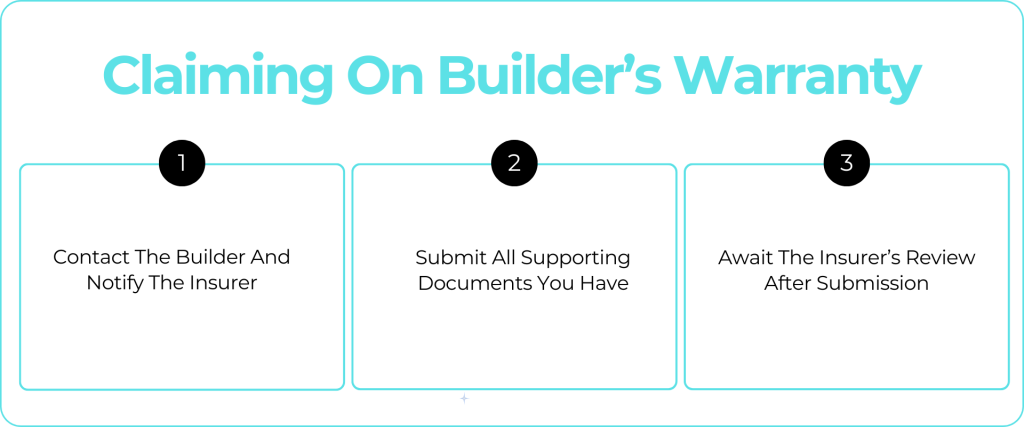Personal liability coverage in Australia protects you financially if you accidentally injure someone or damage their property. It's commonly included in home or contents insurance, rather than offered as standalone coverage. Regularly reviewing your insurance policy ensures adequate protection, especially for high-risk industries like interior fit-outs or landscaping, which may require specialised liability coverage.
Have you ever wondered what would happen if someone got injured at your home, or if you accidentally damaged someone else's property?
I recently came across this question myself. As someone who’s deeply involved in helping Australians protect themselves and their businesses, I realised many people aren’t clear about what personal liability coverage actually is, and how to get it. Let’s clear that up.
What exactly is personal liability coverage?
Simply put, personal liability coverage protects you financially if you accidentally cause injury or property damage to someone else. Say your dog runs into the street, causing a cyclist to fall, or maybe a visitor slips at your home and gets injured—these scenarios can lead to expensive legal claims. This type of coverage helps you manage those costs.
Interestingly, while I was researching online, I noticed that in Australia, standalone personal liability insurance isn't really common. Most Australians don't realise it, but personal liability coverage usually comes bundled with your home or contents insurance policy. This was actually a bit of a surprise for me, too.
Do I really need personal liability coverage?
Absolutely—it's a must-have. Think about it: accidents happen when you least expect them. For example, imagine your child accidentally kicking a soccer ball through a neighbour’s expensive window. Without proper coverage, you might have to pay thousands out of your own pocket. This alone convinced me to double-check my own policy.
And it’s not just for homeowners. Even if you're renting, having personal asset insurance (Link Out To this service here) can be critical, since many of these policies also include personal liability protection.
How to check if you're covered
If you're not sure whether you're already covered, grab your home or contents insurance policy and look specifically for terms mentioning liability protection. From my experience, coverage usually ranges from $10 million to $20 million, but every insurer is slightly different.
If you’re running a business or working as a sole trader, you might need something more specific, like public and product liability insurance. This type of cover protects you if your products or services cause damage or injury to someone else.
Myths about personal liability coverage
While browsing discussions online, I realised there are some common misunderstandings. One big myth is that personal liability only covers incidents occurring at your home. Actually, that's not always true. Many policies extend coverage even when you're away from home. For instance, if you accidentally spill coffee on someone’s laptop at a café, some policies could cover the cost of repairs.
This reminded me of a recent conversation where people mistakenly thought you could buy standalone personal liability insurance in Australia. But in reality, that isn't how it works here. Most insurers include it within broader home and contents policies.
Is your current coverage enough?
It might not be. Often, people think the basic liability included in their insurance policy is sufficient. But consider situations like major property damage or serious injury claims. Costs escalate quickly, and basic coverage might not fully protect you.
Personally, I advise friends and family to regularly review their insurance policies. Making sure you're adequately covered can save you from massive headaches—and financial stress—in the long run. If you're unsure, contact us and I’ll help you sort it out.
Industries that should pay extra attention
Certain industries naturally have higher risks. For example, if you're involved in interior fitouts or landscape horticulture, your liability exposure could be significantly higher. Clients often underestimate these risks, thinking general coverage is sufficient, when often, it isn't.
If you're in these sectors, it's crucial to get specialist advice on liability coverage. Your regular home policy might not adequately cover situations that happen while you're on the job.
What to do next?
First things first - check your existing home and contents policy. Confirm exactly what you're covered for, and note any limitations or exclusions. If you find any gaps or uncertainties, don’t hesitate to ask for help.
For more detailed information about personal liability and just generally finding the right type of insurance for your business, here's another helpful article from the the Victorian Government's business portal.
And remember, it's not just about ticking a box on your insurance paperwork. It's about genuinely protecting your finances, your home, and your peace of mind.
If this article raised questions or concerns, I’m here to help. Reach out anytime - I’d love to assist you in securing the coverage that fits your needs perfectly.
The self-storage industry in Australia has seen a significant growth over the past decade, with more individuals and businesses seeking storage solutions for various reasons. This surge in demand has necessitated a more robust approach to insurance and security, ensuring that both the business and its clients are adequately protected. This article delves into the comprehensive strategies that self-storage businesses in Australia can adopt to enhance their insurance and security measures.
Understanding the Risks
Before implementing any insurance or security measures, it is vital for self-storage businesses to understand the risks involved. These risks can range from natural disasters like floods and bushfires, which are particularly relevant in Australia, to theft, vandalism, and liability issues. A thorough risk assessment should be the first step in any comprehensive strategy.
Insurance: More Than Just a Safety Net
Insurance is a critical aspect of risk management for self-storage businesses. It's not just about having a safety net in case of unexpected events; it's also about providing confidence to your clients that their belongings are protected. Key insurance policies that should be considered include:

These policies should be tailored to the specific needs and risks of the self-storage business, considering factors like location, size, and services offered.
Implementing Effective Security Measures
Physical and digital security measures are essential in protecting the facility, its customers, and its data. Implementing robust security practices enhances the trustworthiness and reliability of the business.
Physical Security Enhancements
- Surveillance Systems: High-definition CCTV cameras should cover all areas of the facility, including entrances, exits, and individual storage units, where applicable.
- Access Control Systems: Implementing electronic gate access or keycard systems ensures that only authorised individuals can enter the premises. Individual unit alarms can also add an extra layer of security.
- Lighting: Adequate lighting is a simple yet effective deterrent against unauthorised access and theft. Ensure all areas of the facility are well-lit, especially during nighttime.
Digital Security Practices
- Data Protection: Secure online payment systems and encrypted databases are essential for protecting customers' personal and financial information.
- Two-Factor Authentication (2FA): Implement 2FA for accessing internal systems to add an extra layer of security beyond just passwords.
- Regular Software Updates: Keeping software and security systems updated is crucial to protect against the latest cyber threats.
- Employee Cybersecurity Training: Regularly train employees on cybersecurity best practices, such as identifying phishing emails, secure password policies, and safe internet usage, to minimise the risk of internal threats.

The Synergy of Insurance and Security
The true power lies in the synergy between insurance and security. While robust security measures reduce the likelihood of incidents, insurance offers a recovery path when something unforeseen happens. Together, they create a comprehensive safety net.
For instance, while high-tech security systems can deter theft and vandalism, they cannot prevent natural disasters. In such cases, insurance becomes invaluable. Conversely, a facility with top-notch security measures may benefit from lower insurance premiums, as the risk of claims is reduced. This synergy underscores the importance of a holistic approach to risk management, where insurance and security measures inform and reinforce each other.
Training and Awareness
No system is effective without proper human oversight. Regular training for staff on security protocols, emergency response, and customer service can empower staff to act decisively and responsibly. Additionally, educating clients on best practices for packing and storing their items can mitigate risks.
For self-storage businesses in Australia, adopting a comprehensive approach to insurance and security is not just about protecting assets; it's about building trust with clients and establishing a reputation for reliability and safety. Understanding the unique risks, investing in the right insurance coverages, implementing both physical and digital security measures, and focusing on training and awareness can ensure the long-term success and sustainability of the business in a competitive landscape.
Visit our Self Storage Businesses page for more information. Alternatively, if you'd like to speak with one of our specialist brokers, you can email us at storage@midlandinsurance.com.au, give us a call on 03 9340 0100, or contact us via our get in touch page.
In the world of landscape design in Australia, professional indemnity insurance emerges as a crucial safeguard. This specialised form of insurance is designed to protect landscape architects and designers from potential legal costs and claims for damages arising from their professional services and advice. The landscape design industry, with its unique blend of creativity, technical expertise, and environmental impact, requires a comprehensive understanding of the risks involved and the importance of adequate insurance coverage.
What is Professional Indemnity Insurance?
Professional indemnity (PI) insurance is a type of liability insurance that covers legal costs and expenses incurred in your defence, as well as any damages or costs that may be awarded, if you are alleged to have provided inadequate advice, services, or designs that cause your client to lose money. This form of insurance is critical for professionals who provide advice or services, like landscape designers, as it offers financial protection against claims of negligence or breach of duty.
Why is it Essential for Landscape Designers in Australia?
The landscape design industry in Australia, with its focus on outdoor spaces, public parks, and private gardens, carries inherent risks. Design errors, oversight in environmental regulations, or misjudgement in structural integrity can lead to significant financial losses or harm to the public. PI Insurance acts as a safety net, ensuring that landscape designers can practice their profession with confidence, knowing they are protected against the financial strain of legal battles and compensation claims.

Professional indemnity insurance is not just an optional add-on but an essential component of a landscape designer's business toolkit in Australia. Here's a deeper dive into why it's critical:
Complexity of Landscape Projects
- Diverse Stakeholder Expectations: Landscape projects often involve various stakeholders, including clients, contractors, and government bodies. Each party may have different expectations and requirements, increasing the risk of disputes over professional advice or services.
- Environmental Sensitivity: Landscape design frequently intersects with environmental conservation. Missteps in design can lead to environmental damage, for which the designer might be held accountable.
Legal Compliance and Standards
- Diverse Stakeholder Expectations: Landscape designers must comply with numerous local and national regulations. Inadvertent non-compliance can lead to legal challenges.
- Environmental Sensitivity: Maintaining the high standards expected in the industry inevitably involves risks. PI insurance provides a safety net in cases where these standards are allegedly not met.
Client Confidence and Market Reputation
- Building Trust: Clients are more likely to trust professionals who are insured, as it demonstrates responsibility and preparedness.
- Reputation Management: In the event of a claim, having insurance helps in handling the situation professionally, thereby protecting the reputation of the business.
Business Stability and Growth
- Business Continuity: Litigation can disrupt business operations. PI insurance helps ensure that the business can continue operating while handling a claim.
- Facilitating Ambitious Projects: With insurance, designers can confidently undertake larger or more innovative projects, knowing they are protected against risks.
Key Coverage Areas of a PI Insurance Policy

Case Studies
The below case studies illustrate the critical role of Professional Indemnity Insurance in safeguarding landscape designers in Australia. They provide real-world scenarios where PI Insurance not only shielded professionals from significant financial liabilities but also upheld the integrity of their practice.
Case Study 1: Design Flaw
A landscape designer in Melbourne created a garden plan for a residential property. Post-completion, the garden experienced severe flooding due to inadequate drainage design. The homeowner sued the designer for damages. PI Insurance covered the legal defence costs and the compensation for redesigning the drainage system, preventing substantial financial loss for the designer.
Case Study 2: Environmental Non-Compliance
In Brisbane, a landscape architect designed a public park. However, the chosen plants were found to be invasive species, leading to an ecological imbalance in the area. The local council brought a case against the designer for not adhering to environmental regulations. The designer's PI Insurance covered the legal costs and the expenses incurred in replacing the plants, safeguarding the designer's financial stability.
Case Study 1: Structural Misjudgement
A landscape designer in Sydney was involved in the creation of a small bridge in a commercial complex's garden. Post-construction, the bridge collapsed due to an error in assessing its load capacity. The incident led to property damage and minor injuries. The affected parties filed a lawsuit against the designer. The PI Insurance handled the legal fees and the compensation claims, protecting the designer from a potential career-ending financial crisis.

Professional Indemnity Insurance is not just a regulatory requirement but a fundamental layer of protection in the landscape design industry in Australia. It offers financial and legal support, peace of mind, and maintains the integrity of the profession. By understanding its significance and applying it wisely, landscape designers can ensure their creative pursuits are safeguarded against the unpredictable nature of their work.
Visit our Landscape & Horticulture page for more information. Or if you'd like to speak with one of our specialist brokers for the landscaping industry, please email us at landscape@midlandinsurance.com.au, or contact us via our get in touch page.
In the Australian real estate landscape, strata title properties represent a unique form of ownership. For owners of these properties, understanding the importance of accurate building valuations and the implications on insurance is crucial. This guide is tailored specifically for strata property owners, providing essential insights into managing their investments effectively.
The Importance of Accurate Building Valuations
1. Ensuring Adequate Insurance Coverage
Accurate building valuations are key to determining the right amount of insurance coverage. For strata property owners, this means ensuring that their investment is protected against unforeseen damages, such as natural disasters, which are not uncommon in Australia.
2. Combatting the Risk of Underinsurance
Underinsurance is a significant challenge in the strata sector. Without a current and accurate valuation, owners might find themselves unable to rebuild or repair their property adequately after damage, leading to considerable financial strain.
3. Understanding Market Value vs. Rebuilding Costs
It's essential for strata property owners to distinguish between the market value of their property and the cost of rebuilding. Insurance should be based on the latter, incorporating factors like local building codes, construction costs, and materials.

Residential vs. Commercial Strata Properties: Key Differences
1. Building Valuation Process
The process of valuing residential strata properties often focuses on factors like living standards and local residential construction costs. In contrast, commercial property valuations consider aspects like commercial construction standards, the impact on business operations, and specific commercial use cases.
2. Insurance Policy Nuances
Commercial strata insurance policies typically address more complex scenarios, including business interruption, public liability, and property damage relevant to business operations. Residential policies, while also comprehensive, focus more on dwelling protection and common residential areas.
3. Frequency of Valuation Updates
The frequency of valuation updates might differ. Commercial properties, due to their dynamic nature in terms of business use and regulatory requirements, might require more frequent revaluations compared to residential properties.
4. Professional Expertise Requirement
Commercial strata property owners often require valuation professionals who specialise in commercial property assessments, given the complexities of commercial building standards and usage. Residential property valuations, while also requiring professional expertise, are generally more straightforward.

The Process of Building Valuations in Australia
For Australian strata properties, a professional valuation involves assessing the cost of rebuilding the property. This process should account for Australian standards in construction, local material costs, and other factors unique to the property's location. Regular revaluations are recommended, given the dynamic nature of the Australian property and construction markets.
Strategies for Strata Property Owners:
1. Regular Revaluations
Both residential and commercial strata property owners should advocate for and ensure regular building revaluations to keep pace with the changing market and any upgrades or modifications to the property. It’s recommended to undertake a valuation at least every 2 years, especially in the current inflationary market.
2. Informed Insurance Policies
Understanding the details of strata insurance policies is crucial. Owners should ensure that their policy is up-to-date and reflects the most recent valuation, adhering to Australian strata insurance laws.
3. Professional Advice
Engaging with insurance brokers and valuation experts who specialise in the Australian strata market (residential or commercial) is advisable. These professionals can offer tailored advice and help navigate complex insurance scenarios.
4. Collective Engagement and Decision-Making
Strata living involves shared responsibility. Owners should actively participate in strata meetings and discussions regarding insurance to ensure a collective understanding and agreement on insurance matters.
For strata property owners in Australia, staying informed about building valuations and insurance is not just a legal obligation but a critical component of safeguarding their investment. Regular valuations, understanding insurance policy details, seeking professional advice, and engaging collectively in decision-making processes are essential steps for effective management and protection of strata properties.
Visit our Strata / Owners Corporation Insurance page for more information. Or if you'd like to speak with one of our brokers, please get in touch with us.
This version of the article is specifically designed for strata property owners in Australia, focusing on the aspects of building valuation and insurance that are most relevant and critical to their unique situation. It aims to provide practical advice and insights to help them manage and protect their investments effectively.
There was a wide range of measures announced at this year’s Federal Budget that are designed to help support small business owners with cost pressures and contemporary challenges.
Some of the key measures announced include:
Small business asset write-off extended and increased
The Australian Government is increasing the instant asset write-off threshold to $20,000, from 1 July 2023 until 30 June 2024. Small businesses, with aggregated turnover of less than $10 million, can deduct up to $20,000 per business asset/resource for the 2023-24 tax year. These purchases must be first used or installed ready for use in your business between 1 July 2023 and 30 June 2024.
Learn more about the $20,000 instant asset write-off.
Small Business Energy Incentive
This tax incentive* will provide an additional 20 per cent tax deduction (up to $20,000) for eligible assets that support electrification and more efficient energy use, from 1 July 2023 until 30 June 2024.
Businesses will be able to make investments like:
- electrifying your heating and cooling systems
- upgrading to more efficient fridges and induction cooktops
- installing batteries and heat pumps.
*This incentive does not apply to electric vehicles.
Learn more about the Small Business Energy Incentive.
You may also read:
Energy Bill Relief Fund
The Australian Government is partnering with state and territory governments to deliver up to $3 billion of electricity bill relief for eligible small businesses. From July 2023, this plan will deliver up to $650 for eligible small businesses, however the total amount of bill relief will vary across our states and territories.
Learn more about the Energy Bill Relief Fund for small businesses.
Cyber security support
The Government will also fund measures to help protect small businesses against cyber threats through a $23.4 million program to help them train in-house cyber wardens. The program will be delivered by the Council of Small Business Organisations Australia (COSBOA).
See how the Government is supporting Cyber Wardens.
Funding for small businesses and start-ups
$392.4 million has been committed to the Industry Growth Program which aims to help small to medium sized businesses and start-ups to commercialise their business ideas and grow their operations. The program will provide business grants and mentorship programs.
Resources: Midland NSW Stamp Duty Exemption Declaration Form,















